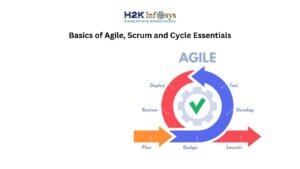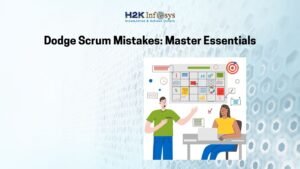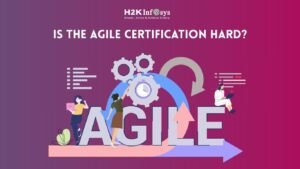Nowadays the agile movement is expanded to larger organisations in more industries there are a lot of variation we are used to a variety of frameworks, techniques and also methods used from XP to scrum to Kanban for delivery. Actually we are not using an agile but a hybrid approach. Hybrid Agile is a combination of agile methods and non agile techniques.
We have an example of a detailed requirements effort which can be followed by a sprints of incremental delivery that would be a hybrid approach. We have a often iterative prototyping of a design and individual plan-driven implementation can be called as Hybrid approach.
Hybrid = non-Agile + Agile = in between which has meaning
When we have to use the Hybrid approach?
Other than there is right reason and a wrong reason to do something. The wrong reason for mixing techniques is to keep together and also to keep it joneses. ”Doing agile techniques “is not a goal. The aim is to pass the right business outcome using the right techniques.
Here there are two scenarios:
- Hybrid as Fit-For-purpose- For projects which have a lower risk profile, that use plan-driven approaches that look for lower costs. For higher risk projects that use iterative techniques to repeat activities until issues that is resolved. For any projects that needs aggressive delivery, incremental techniques we may deliver something sooner, or to ensure customer engagement. To travel to a complex environment, agile techniques are having higher initial but it might worth it for all outcomes. Each will have their strength. By mixing these together in a correct way it can be fit into the context as better as narrowly using one of them.
- Hybrid as Transition-to-Agile- There are many teams that are able to make to switch to agile ways. A very large organisation, the more moving parts, the longer it will take a shift. The agile methods will look and also feel different.
The agile waterfall hybrid model is a combination of agile practices and also waterfall method.
When we have to use the Hybrid agile waterfall model?
This agile waterfall hybrid model will be used in two scenarios
- When the product consists of hardware and software components.
- The product will be a piece of software which will have a back-end and front-end technology.
The main possible reasons to use the hybrid agile model are:
- This reduces design, analysis and planning, at same time provides to define the project frames including budget and time delivery.
- It maintains compliance with the standards
- It enhances the collaboration.
- It also adapts the agile culture which is problematic; hybrid will be a good step.
Hybrid model needs strong collaboration between two types of teams. The special communication forms and also channels which have implemented.
How we are using a hybrid model of Agile?
- By planning, design and requirements definition that can be done with a waterfall, but development and test in short sprints by using Agile.
- To apply new types of communication channels also collaborative software tool helps information exchange, data consistency and traceability across the lifecycle..
- It involves product owners and clients in the communication that is quicker.
- It has to define standard compliance expectations and also has focus on them in the design-planning phase.
Blended vs. hybrid agile
Blended agile will be a combination of two or more agile methods, techniques and frameworks. By adding some Kanban and WIP limits to the sprints that would be blended approach. For many agile users its easy to understand.
Blended=Agile+Agile=Better Agile
Questions:
- What is Hybrid Agile approach?
- Why we need this Agile Hybrid approach?





























